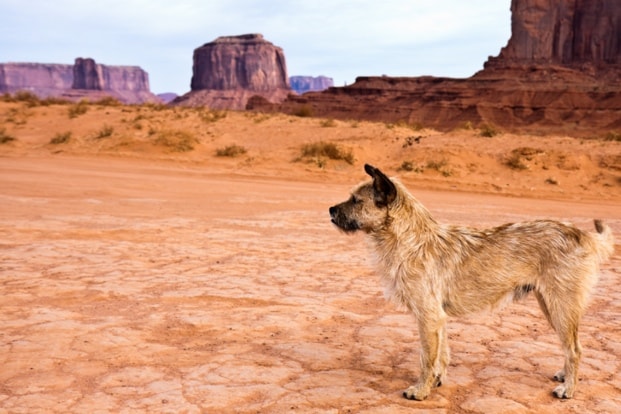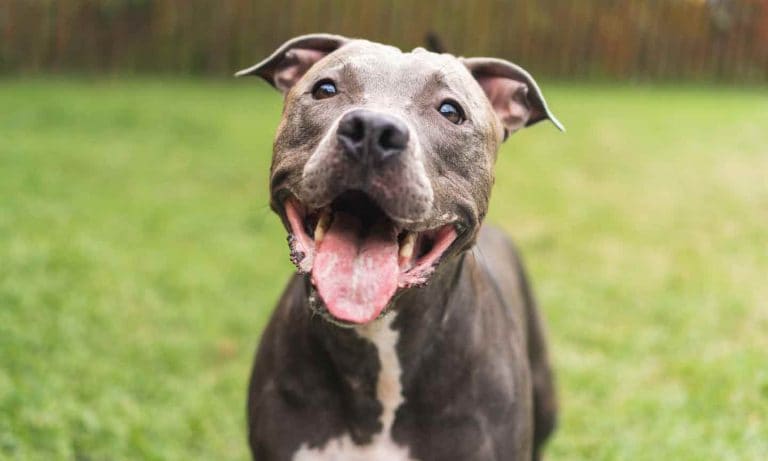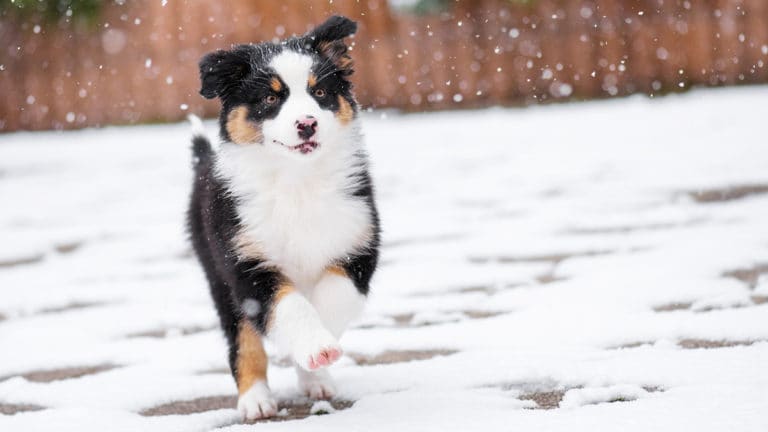First, the bad news: Technically speaking, there are no true hypoallergenic dog breeds.
“Unfortunately, there are no real documented characteristics that make a breed more or less allergic,” says Dr. Laura Bellinghausen, DVM, veterinary technology program director at Carrington College in Pomona, California. “Humans can develop allergic responses to many different dog allergens; these allergens are usually found in the skin, hair, saliva and urine. The levels of these allergens vary from dog to dog and are not consistent within breeds.”
When people talk about hypoallergenic dogs, they usually are talking about low-shedding dog breeds.
“Low-shedding dogs do decrease the amount of environmental contamination that occurs in the home,” Dr. Bellinghausen says.
If you’re allergic to a dog’s saliva, rather than his hair, a low-shedding dog still will trigger your allergies, so it’s helpful to chat with your doctor to figure out where the real issue lies. To learn more about different dogs and their coats, check out The Complete Dog Breed Book by the American Kennel Club (AKC).
Four Low-Shedding Dog Breeds
1. Bichon Frise
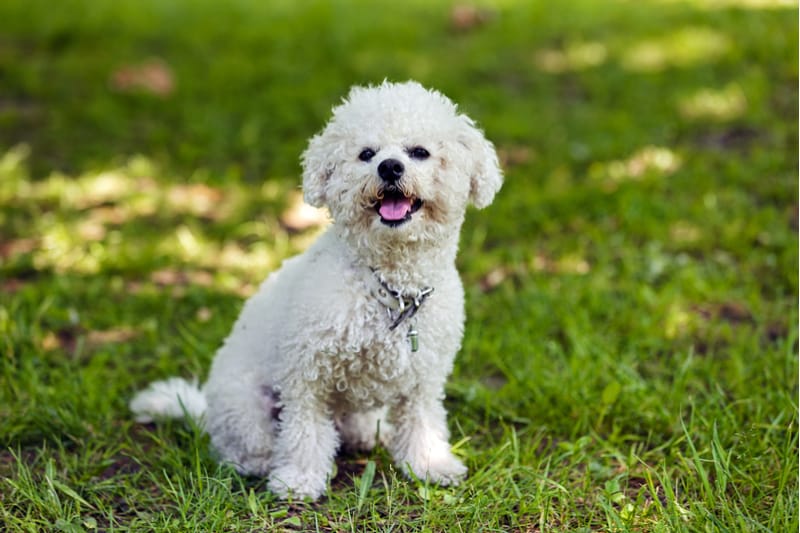
Vladimir Nenezic/Shutterstock.com
The AKC considers the Bichon Frise one of the allergy-friendly dogs because the breed sheds very little and requires regular grooming, which helps lessen the allergens.
“A ‘low-allergen’ breed is usually one that has a continuously growing coat and/or does not shed very much,” says Dr. Lucas White, DVM, from Sunset Vet Clinic in Edmond, Oklahoma.
In addition, Dr. Bellinghausen says that longer-haired dogs are taken to the groomers, bathed and shaved down more often, which also can decrease the number of allergens.
2. Chinese Crested
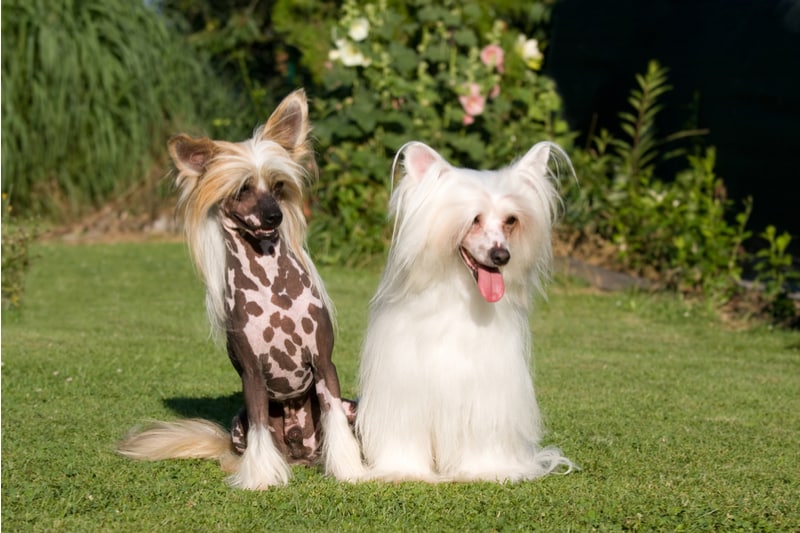
Lenkadan/Shutterstock.com
The Chinese Crested sheds minimally and has very little hair except on his head and tail.
“The Chinese Crested can be suitable for allergy sufferers,” Dr. White says. “The breed can be hairless or have hair (called a Powderpuff), but the variety with hair is a low-shedding type of coat.”
Shorter-haired dogs also are easier to wipe down routinely, which can help significantly, Dr. Bellinghausen adds.
“Often, owners think they are allergic to their dog, but they are really allergic to the pollens, molds and spores brought in on the dog after being outside,” he says. “For these people, short-haired dogs are easier to manage and clean after a romp in the park.”
3. Bedlington Terrier
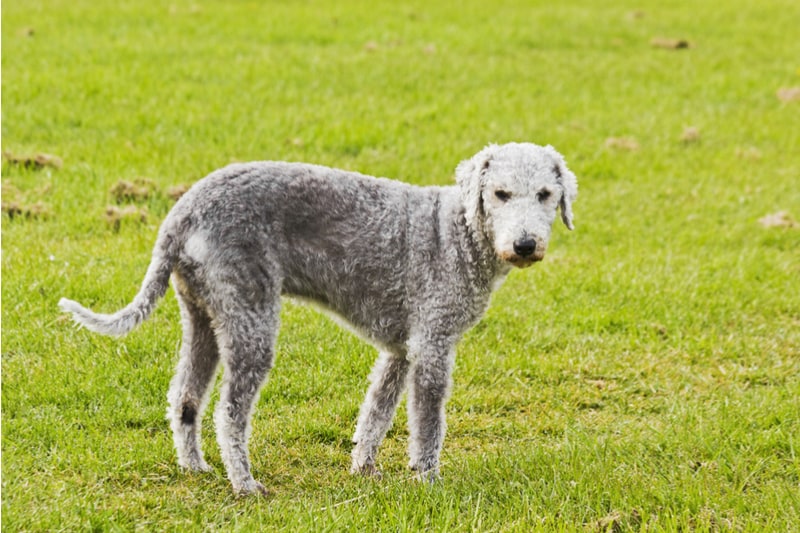
Joseph Gaul/Shutterstock.com
The Bedlington Terrier has a thick, wooly coat and an almost nonexistent undercoat, which makes it a great option for people who are allergic to dog dander.
“Dog dander is a combination of keratin, epithelial cells and dried sebum,” Dr. Bellinghausen says. “These particles are shed into the environment and often stick to the hair shafts, leaving white flecks in the coat.”
Dogs with long hair or thick undercoats can harbor more dander than those with short sleek hair, Dr. Bellinghausen says.
“Dander is just the clumps of dead skin cells from the top layer of skin that are naturally sloughed off as the skin renews itself,” Dr. White says. “All dogs do this, but dogs that shed a lot produce more dander as their skin is renewing itself faster.”
4. Poodles

Anna_Bondarenko/Shutterstock.com
Poodles often are referred to as the top hypoallergic dog breed because they shed very little and are much less likely to trigger allergies. All three Poodle size varieties—Standard, Miniature and Toy—have the same type of coat. You can choose the size that fits your lifestyle without worrying about differences in shedding.
Low-Shedding Designer Dogs
Another option for allergy sufferers are designer dogs, like Poodle mixes, including Labradoodles and Goldendoodles, Dr. White says.
“The puppies tend to inherit the continuously growing hair of the Poodle and do not shed as much as their Labrador or Golden Retriever parent,” he says. “Any other cross with a low-allergen pet may yield the same results.”
Keep in mind that what works for one person might not work for another in terms of preventing allergy attacks.
“I would advise dog allergy sufferers to consult with their human doctors to determine which dog allergens they are allergic to—dander, saliva or urine—and what precautions to take,” Dr. White says. “Then spend some time with different low-allergy breeds to determine [how] they would react.”
Ways to Reduce Chances of Allergic Reactions
If you suffer from allergies and want to share your home with a dog, Dr. Bellinghausen says there is no reliable method of predicting the level of allergic response to any breed or type of dog, and allergies are complicated and can change over time. To avoid problems, recommends spending time with the pet prior to purchase or adoption, so you can figure out if you’re allergic to him.
Even if you have a low-shedding dog, there are things you can do to further lessen the chances of an allergic reaction.
“Provide your dog with regular baths/wipe downs or grooming appointments to decrease allergen buildup,” Dr. Bellinghausen says.
Bathing your pup using specially formulated shampoo, like Allerpet Dog Dander Remover, and other grooming products, like SheaPet skin repair and dander care, can help soothe your dog’s dry skin and lower the promotion of dander.
So, even though there are no true hypoallergenic dog breeds out there, you have options for adding a pup to your home without making your allergies worse. Between selecting low-shedding dog breeds, keeping up with his grooming needs and taking advantage of specially formulated products, you can find a perfect match for your family.
Diana Bocco is a full-time writer and adventurer who has written for National Geographic, DiscoveryChannel.com, Yahoo! and Marie Claire. Diana has lived in five countries and taken her rescued dogs along to each one of them.
Featured Image: everydoghasastory/Shutterstock.com
Share:







